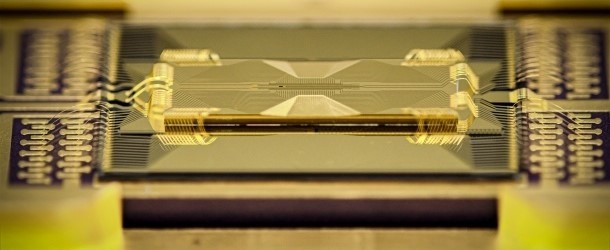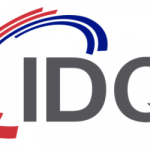IonQ Delivers A New Architecture And Glass Quantum Computer Chip A Year Earlier Than Expected

(Forbes) IonQ beat its technology roadmap projection by more than a year by demonstrating its ReconfigurableMulticore Quantum Architecture (RMQA). This technology should eventually allow IonQ to begin scaling large numbers of qubits. Moreover, IonQ has also delivered another chip technology ahead of schedule – RMQA will be implemented on a new quantum chip platform called Evaporated Glass Traps (EGTs).
Many technologies are used for quantum computers, such as superconductors, photonics, silicon-based, neutral atoms, trapped ions, and several others. IonQ’s present quantum technology of choice is natural ions created from an isotope of a rare-earth metal called ytterbium.
This announcement was not paired with a supporting academic paper, but that is expected to come later. Dr. Robert Niffenegger, Assistant Professor Electrical and Computer Engineering at University of Massachusetts Amherst, said, “Certainly the new chip is impressive but without performance data… it is hard to determine how big of a step they’ve made.”
IonQ’s recent demonstration involved RMQA using 4 chains of 16 ions in an EGT Series ion trap chip. These ion chains were transported and merged into combinations of a higher-connectivity, 32-ion quantum computing core. The EGT series chips are expected to support more chains. Each chain will increase the quantum computational power by a factor of 4000 or more.
If IonQ is correct, and if error correction can be solved, then an EGT trapped-ion chip containing a triple digit number of qubits will be an extremely powerful quantum machine capable of solving many significant problems.
Notes:
1 In 2016, ion trap vacuum chambers looked like large diving helmets. They have since evolved into much smaller devices through the years. The new Evaporated Glass Trap (EGT) is a small chip that can be held in the palm of a hand and can be operated at room temperature.
2 Laser pulses are applied to entangle the qubits after ions merge and the 32-ion chain is formed.
3 EGT allows ion chains to be scaled without loss of fidelity. Excess motion from the qubit transport is normally expected, so 4 out of 16 ions in each chain are reserved for cooling.
4 The EGT ion trap chip provides stability necessary to operate RMQA with little to no recalibration. Lasers are known to charge substrates and create the need to make slight voltage adjustments to properly move the ion chains. EGT eliminates this problem, maximizing uptime and optimizing transport time.



















